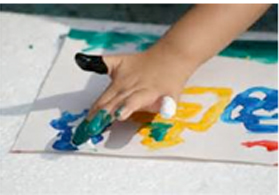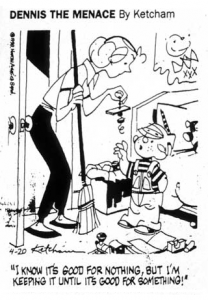 Need help making decisions on the many items cluttering up your beautiful home? Why not start with NAPO-GPC? What? You’re not really sure what that is? It’s the National Association of Professional Organizers Greater Philadelphia Chapter: whew — that’s a mouthful.
Need help making decisions on the many items cluttering up your beautiful home? Why not start with NAPO-GPC? What? You’re not really sure what that is? It’s the National Association of Professional Organizers Greater Philadelphia Chapter: whew — that’s a mouthful.
We are eighty members strong. Plus associate members which include Philly Junk and Impact Thrift Stores. The chapter started in 1996 and has grown by leaps and bounds. Once a month we meet for networking, professional development workshops, and educational programs. Workshop topics include ADD, Feng Shui, chronically disorganized, and senior relocations. Our library has close to one thousand resources for the members to rent including books, CD’s, and videos.
Did you get to meet us at the Philly Home Show? Perhaps you saw us on the NBC 10! Show or called WHYY and spoke to us on the phone when you gave your donation. You probably heard about Project Thanks, where we organized the home of a veteran after she completed three tours in Afghanistan. We also plan shredding events and collected thousands of shoes for Soles4Souls. This winter we are planning on helping Cradles to Crayons.
Our members are amazing! Some are strictly residential organizers, some corporate, others specialize in home staging, home design, working with clients who have disabilities, and collections including photos and antiques. Coaching is part of the organizing process too, including holistic life coaches, business coaches, academic coaches, as well as consultants.
Check out our website at NAPO-GPC.org. There you will find even more information about our wonderful association as well as our blog with many tips and hints to help you get started on your organizing projects. When you are ready to hire an expert click on “Find an Organizer”, you will be glad you did!
 Your child is at summer camp. If it’s a day camp, he or she has been bringing home art projects galore. What on earth do you do with them?
Your child is at summer camp. If it’s a day camp, he or she has been bringing home art projects galore. What on earth do you do with them?
While you are undoubtedly proud of your child’s work, now is a great time to decide which papers and projects to keep (or not). Decide with your child ahead of time an appropriate number of pieces that you are going to keep. Be flexible. If you find one or two over that number, don’t worry – but you probably should not keep all of them!
Have your child choose which pieces of artwork they would like to display. Turn them over and put your child’s name and the current year’s date on it. String a piece of fishing line between two hooks on a wall. I recommend Command Hooks which do not damage walls and are easy to apply (and remove). Find some colorful clothes pins (can often be found at a dollar store) and clip the artwork to the line. You now have created a rotating art gallery.
What to do with the artwork or papers you are not yet ready to toss? Again, label the reverse side with your child’s name and the current year. Find an appropriate size box that will fit the size papers you have that is preferably not more than 5” in height. Place all of the “keep” papers in the box. On the very top of the pile of papers, put a page with the following information on it: his or her name and the name of the box (Camp Memories / Artwork by…) and the year. Encourage your child to draw a label for the front of the box. Store the box away either on a closet shelf or under the bed.
Next year, repeat the process but first, sort through the prior year’s camp artwork. Are there some in there that are no longer as precious as they seemed last summer? It is ok to get rid of them (as long as you both agree). Add to the top of the pile this year’s collection and top it with your child’s name and the current year.
You now have a jump start on the school year…a way of displaying your child’s art and papers that will undoubtedly collect in the bottom of his or her backpack throughout the year. Just repeat these steps throughout the year and you will have the continuation of a great memory box.
 For most of us summer means taking time to recharge our batteries and spend quality time with family. Vacation is also about choosing what we want to do on our own timeline. Whether you are going away for vacation or enjoying a ‘staycation,’ quiet time is a great opportunity to get organized in small ways that make a big impact when the rat race begins again in the fall.
For most of us summer means taking time to recharge our batteries and spend quality time with family. Vacation is also about choosing what we want to do on our own timeline. Whether you are going away for vacation or enjoying a ‘staycation,’ quiet time is a great opportunity to get organized in small ways that make a big impact when the rat race begins again in the fall.
Whether you are sitting on a beach, in a plane, or on your back deck, here are 10 ways to spend some of those lazy hours:
1. Organize your cell phone. Delete unwanted items and add missing contacts. Add names you call often to save time. Even if you don’t have the phone number, you can add the number later.
2. Learn how to truly use your phone. Do you have a new phone and not know how to use it to its fullest potential? Take the time to search around and focus in on what you want to know. If you have a smart phone, go on the company’s website and find answers.
3. Take your ‘reading pile’ when you travel. We all have a reading pile, so carry your accumulated unread magazines and miscellaneous mail with you and throw it away as you read it.
4. Clean out your computer. If you are like me, you take your computer with you when you travel. Use the time to delete unwanted files, reorganize documents into folders, and put old files into other file folders to avoid cluttering current projects.
5. Write down your list of future ‘wants.’ Having a list of the things you want to purchase, big and small, now and in the future, makes it easier to avoid spending money on things you don’t need and really can’t afford. Keep the list on your smartphone under Notes.
6. Do a ‘brain dump.’ When we’re away from home, it doesn’t mean our minds suddenly slow down. A brain dump means writing down everything that’s on our minds so we don’t forget what’s important. Putting our mental ‘lists’ in writing also helps us organize our thoughts.
7. Cut down on calls from telemarketers. Call 1-888-382-1222 and register all the phone numbers you don’t want telemarketers to use. You can also register online at www.donotcall.gov, but calling is easy. Your registration will not expire.
8. Opt out of credit card offers. Call 1-888-5-OPTOUT (1-888-567-8688) to get your name and address removed from the main consumer credit reporting agencies mailing lists: TransUnion, Experian and Equifax.
9. Clean out your purse/wallet/briefcase. How much do you REALLY need to carry with you? Most of the time, we aren’t in a third world country where the conveniences of life aren’t readily available. Don’t burden yourself by carrying around everything you or anyone else needs to survive every catastrophe.
10. Schedule fun stuff and down time. Place entries on your calendar for family time, long weekends, vacations, and personal projects to ensure you’ll take the time to do it.
Finally, did you know the word leisure comes from the Latin licere, meaning ‘to be permitted’? Many of us have to permit ourselves to be leisurely so make sure you take time off and use a little of that time to get organized so you have time for the joyful things in life!
“Joy is not in things: it is in us.” Richard Wagner, German author
 As professional organizer I hear people label themselves especially when they call for help. Usually this occurs while doing an assessment on the phone. Often, the person calling states or describes themselves as a hoarder. My opinion is that, due to reality shows like Hoarders or Buried Alive, people seem to identify themselves from what they see on t.v. People use this label even when they aren’t a hoarder. It’s become a generic label that people use falsely to describe themselves. These days, what you see or hear in the media soon become buzz words used by many. In times prior to reality shows these people may have called themselves pack-rats. They may be defined as people who gather, accumulate, store quantities of items for too long — for many “meaningful” reasons. Generally, hoarding behaviors fall under the category of chronic disorganization.
As professional organizer I hear people label themselves especially when they call for help. Usually this occurs while doing an assessment on the phone. Often, the person calling states or describes themselves as a hoarder. My opinion is that, due to reality shows like Hoarders or Buried Alive, people seem to identify themselves from what they see on t.v. People use this label even when they aren’t a hoarder. It’s become a generic label that people use falsely to describe themselves. These days, what you see or hear in the media soon become buzz words used by many. In times prior to reality shows these people may have called themselves pack-rats. They may be defined as people who gather, accumulate, store quantities of items for too long — for many “meaningful” reasons. Generally, hoarding behaviors fall under the category of chronic disorganization.
With my 10 years of “hands on” experience and educational classes on chronic disorganization, my definition of hoarding is this: Hoarders are people who are emotionally attached to their things and gather excessively beyond the norm. This includes trash as defined as items soiled, damaged, expired, unhealthy, worthless, or nonsensical. They place a higher value on these items and sometimes have irrational reasons why they hold on to them. They will acquire and put themselves in harms way in order to keep these items in their physical space. They will choose to give up all support and interaction with other human beings. What they acquire and choose to keep — become and are — their prized possessions. They will jeopardize their own safety in order to keep these possessions. They can live in filth and squalor. They endanger themselves and the dwelling’s structure and home’s safety. In extreme cases they will become homeless in order to hold onto their prized accumulations.
Hoarding is a clinical term now recognized by the American Psychological Association and is included in their Diagnostic and Statistical Manual (DSM). In the current edition, DSM-V, this disorder, Hoarding is newly defined. After so many years, hoarding is now being studied, researched, and evaluated individually. It also can coexist with several mental disorders and diseases.
Professional Organizers ask pertinent questions when doing an assessment so we can best serve the individuals. We do not judge people, and quite often find people use the “hoarding” term too broadly and too often.This is so sad, CLUTTER will make anyone feel unhappy.
Labeling yourself can be self defeating. Labels can help identify and create awareness for change. But labeling yourself as a hoarder can ultimately give you a negative self image. It will dis-empower you; its negative connotations will not forward your growth or the process. Support is important, especially if you feel like your living space is out of control. Please get assistance either from a healthcare professional, your physician, a professional organizer specializing in chronic disorganization, or from all 3 sources. The key is awareness, getting help, and taking action!
The Institute for Challenging Disorganization offers this:
“Chronic disorganization is having a past history of disorganization in which self-help efforts to change have failed, an undermining of current quality of life due to disorganization, and the expectation of future disorganization.
FOR MORE INFO, please check out this link: http://www.challengingdisorganization.org/
“We can’t solve problems by using the same kind of thinking we used when we created them” — Albert Einstein
What reaction comes up in you when you hear that phrase? “I’ll think about that someday–in the distant future.” “I’m too young to bother with that stuff.” “That’s for people with problems I don’t have yet—thank God.” “I wouldn’t know where to begin.” “I don’t have any affairs to get in order!”
Do you have children under your care? Are you responsible for an aging relative, in whole or in part? Is there someone with disabilities in your life? Do you feel uneasy when you hear of a catastrophic event happening to someone younger than you? Do you treasure your independence? Do you own a home and/or things that are special to you? Do you do everything legally within your power to minimize your annual income taxes?
If you answered “yes” to even one of these questions, then starting now to get your affairs in order might make sense for you.
We usually associate getting our affairs in order with legal documents and professional experts such as wills, powers of attorney and advance directives, lawyers, accountants and financial planners. While these documents and experts certainly play important roles in your well-ordered affairs, just making a few basic lists yourself can be a useful start:
Still feeling daunted? You might consider enlisting the help of a professional organizer to get your affairs in order. Professional organizers are experts at helping people sort through quantities of papers and objects, separate the important from the inessential, and arrange useful objects and information in systems that are easily accessed and used. Getting your affairs in order is just a process for capturing the essential information about you as a person and what you own, in a form that can be used readily by others if you become unable to communicate, along with legal documents that clearly express how you want yourself and your possessions to be handled. You can do this, and an organizer just might provide you the support you need to get started!
 Why Haven’t I Done This Before?
Why Haven’t I Done This Before?
Are you asking yourself any of these questions? What does this mean?
The concept of shopping in your closet is- Know what you own, Create options you love, Wear what looks good & Makes you feel good, and Add what you are missing.
Simply, it’s seeing what you have, distinguishing what your patterns are, coordinating items, and getting into action!
SUGGESTION: Have a pen & paper ready to record your observations
It’s time to get into your closet. If you can’t manage that, then you should clear a path into it, maybe with some professional help from an organizer!
1. Observe it first. Then, if possible group like items together…pants with pants, sweaters with sweaters and so on.
2. Notice how many of the same item you have in the same color ( sound familiar!) For example- You notice you have 12 black turtlenecks? – couldn’t find them and purchased more? Did you get them on sale? Are they in your favorite color or colors?
3. Next is to take an inventory of what’s in every category. First it’s a broad look. This will inform you of what’s missing. Also you are gathering information about your colors, styles you tend to buy, styles you prefer to wear, and the correct size that fits now! At this point, you can check sizes and conditions of the garments. Pull out soiled, damaged, items for repair, outdated, and items you don’t feel good in and are the incorrect size. Now is the time to purge and bag the items “Leaving” your closet (if you haven’t done so already!) Look for what stands out, like the items you like or don’t like and the items that fit. All the items you want from each category that remain will become your “core” wardrobe.
4. At this point you will have noticed your buying patterns. Ask yourself questions, because this might help you reveal the “why’s” to what you have in your closet. Now you can make some conscious choices. It would benefit you to stay open to this exercise!
5. This is the time you can start coordinating outfits. You can split up sets and use items separately. You may have purged a part of a set which is fine! If this isn’t your forte then you may consider getting some help from a wardrobe consultant/organizer.
You can have a lot of fun creating new outfits and blending pieces together. At this point you may need to list the colors or items missing for these coordinates/outfits. This will become your new shopping list. Start using your new insights. These insights about your buying habits will help you from buying items that you don’t need or want.
Using this method will result in some new fresh looks for the season. Generally using items you already had that either you couldn’t see, find or realize could work with something else. This might improve your impulse buying! Also another outcome of this will be, that you have cleared your closet space and can practice staying organized!
Have some fun with this and let your creative juices flow!!